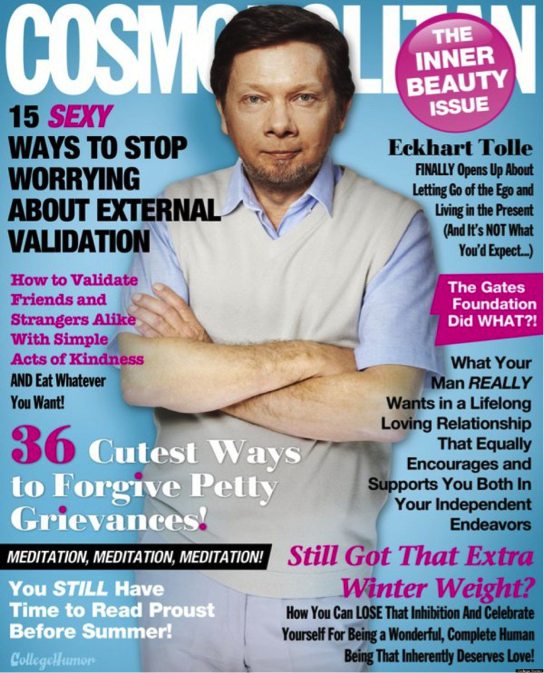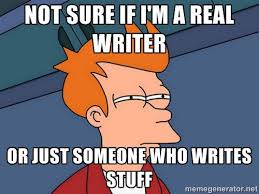Ah, listicles. Are they just clickbait? A harmless way to quickly digest information on the go? Or worse, a scourge brought on by the information age, threatening the very foundation of society itself? If that last one sounds like a bit much, a surprising tally of writers seem to hold this opinion (de Beer, 2014; Dube, 2015; Porter, 2014); still, many others (Denning, 2019; Edidin, 2014; Stewart, 2015) staunchly defend the practice. I’m probably somewhere in the middle, or as my old boss used to say when I needed feedback, “I’m strongly ambivalent.” (I wasn’t aware that this was a joke for waaaaaay longer than I should have.)
With that, let’s examine five random aspects about listicles… perhaps by the end I’ll form a coherent opinion.
1) A Respectable History
Some experts attribute the spread of the listicle technique to the “25 Random Things About Me” posting format that became wildly popular on Facebook way back in 2009 (Taylor, 2013). Research (Okrent, 2014) even suggests that the word itself — a portmanteau of the words “list” and “article” — connotes the same positive feelings to a reader that the word “popsicle” might. In other words, it’s fun and tasty, but don’t expect any real nutrition.
Others (Poole, 2013) endorse the listicle’s literary roots, citing such works as Eco’s “The Infinity of Lists” (an actual book of lists) or Covey’s “The Seven Habits of Highly Effective People.” Even religion echoes this format — Martin Luther’s “95 Theses” protest or (backing up a few thousand years) the Ten Commandments — also suggest that writers (and I guess prophets) have been using lists to share and persuade for centuries (Poole, 2013). Even before the advent of social media, “checkout lane” magazines have been exploiting this technique for years. We’ve probably all seen the slick Cosmopolitan cover that lurks nearby as our purchases are scanned, daring you to pick it up and throw it on the belt with alluring teasers like “10 Ways Your Husband Is At Home Cheating on you RIGHT NOW!”
(I definitely made that last one up, but you have to admit they’re usually ridiculous.)

2) Great for the Interwebs
As the internet grew, bloggers everywhere were quick to capitalize on the technique (Okrent, 2014). Not only does the listicle format hint to the reader that the information provided will be succinct and palatable, it also presents multiple opportunities for marketers to leverage keywords, links, and images that make a company’s content easier to find through internet searches and media sharing (Edidin, 2014; Mulholland, 2018; Stewart, 2015). I tend to agree with Wired’s Rachel Edidin (2014), who pointed out that readers benefit because reading each list item feels like a mini-accomplishment. So true! I love checking off tasks, and listicles honestly provide me with a cheap thrill each time. Edidin (2014) also points out other interesting advantages, but mostly stresses that reading listicles actually encourages the reader to find out more about a particular topic, and the list format itself makes related information easy to curate.
3) Fancypants Writers? No Les Gusta
On the other hand, I may have already proven that listicles aren’t always composed of easily digestible chunks of succinct information. In fact, most writers who apparently despise them (de Beer, 2014; Dube, 2015; Mercado, 2016; Porter, 2014) focus on the listicle’s chief vice: now we will all read less, so we’re all doomed to become bad writers ourselves. The easily-skimmed format sure is convenient, they continue, but it can lead to the loss of critical reading skills, such as learning how to follow narratives or substantiate arguments (de Beer, 2014). Some experts (Dube, 2015; Mercado, 2016) go as far to say that the advent of listicles will continue to lower the standard of journalism as a whole, and that it will eventually rot our brains. Yikes!

4) You’re Still Reading
I don’t really need this fourth point here, but some bloggers like Mulholland (2018) suggest using nice round numbers like 10 or 15 in your listicle title to appeal to more readers. He argues that the opposite can work as well, as “interesting” numbers like 13 or 21 sound purposely specific, so they should generate curiosity and might solicit a few more successful clicks (Mulholland, 2018).

5) Lighten Up Dude
I mean, most of us are not trying to take in Tolstoy on the subway. Let’s face it, we’re probably reading listicles in the bathroom, where the short format is convenient (and more sanitary?) for everyone involved. Buzzfeed sure as heck embraces this (Alpert, 2015), as they post hundreds of listicles every day. From a pure writing perspective, it’s safe to say that they aren’t out for a Pulitzer with “49 Photos That Will Permanently Mess Up Your Brain” (no link provided, you can thank me later). A perusal of historically bad listicles should help those “real” writers relax: just keep doing what you’re doing, man! They really shouldn’t feel threatened as listicles become increasingly more prominent online. Even if they are proven right, and we all become…well, bad writers — wouldn’t that just make those with more refined writing skills that much more in demand?
I think it really just comes down to the subject and the medium — if I want to learn about Tony Danza, I’m much more likely to read “Top 7 Roles Played by Tony Danza” on my phone, rather than some long-form prose about the actor. (Rest assured, the first four on this list are all characters named “Tony.”)

I was going to expound on a point 7 about how listicles often leverage their title as clickbait (Porter, 2015), but (a) I don’t have a point 6, and (b) now that you’re here you knew that number 7 was not going to be that scandalous anyway.
So, how do you feel about listicles? Are they a fun, easy way to learn in our world of smartphone reading? Or do they require so little of the reader that it will ultimately bring on the death of journalism itself, followed by the end of our civilization?
Perhaps we can all just chill out and be happy readers (and writers) either way. I do appreciate you reading my own listicle here — hopefully you made it through with your brain intact.
Fight On!
Tripp
References
Alpert, L. (2015, January 29). BuzzFeed nails the ‘Listicle’; What happens next? The Wall Street Journal. Retrieved from https://www.wsj.com/articles/buzzfeed-nails-the-listicle-what-happens-next-1422556723
de Beer, E. (2014, June 30). 10 explanations why listicles kind of suck. Thought Catalog. Retrieved from https://thoughtcatalog.com/emily-de-beer/2014/06/10-explanations-why-listicles-kind-of-suck/
Denning, S. (2019, April 14). Five reasons why millennials love listicles. Forbes. Retrieved from https://www.forbes.com/sites/stevedenning/2014/08/29/five-reasons-why-millennials-love-listicles/
Dube, R. (2015, June 9). 5 reasons listicles are bad for you: So stop reading them. MakeUseOf.com. Retrieved from https://www.makeuseof.com/tag/5-reasons-
Edidin, R. (2014, January 8). 5 reasons listicles are here to stay, and why that’s ok. Wired. Retrieved from https://www.wired.com/2014/01/defense-listicle-list-article/
Mantis, B. P. (2013, February 18). 15 Hedgehogs with things that look like hedgehogs. BuzzFeed.com. Retrieved from https://www.buzzfeed.com/babymantis/15-hedgehogs-with-things-that-look-like-hedgehogs-1opu
Mercado, J. (2016, July 11). 5 reasons why listicles are a step in the wrong direction. The Odyssey Online. Retrieved from https://www.theodysseyonline.com/5-reasons-listicles-step-wrong-direction
Mulholland, R. (2018, July 6). Writing listicle: The 11-Step guide and why they’re awesome. Process Street. Retrieved from https://www.process.st/listicle/
Okrent, A. (2014, January 30). The listicle as literary form. University of Chicago Magazine. Retrieved from https://mag.uchicago.edu/arts-humanities/listicle-literary-form
Poole, S. (2013, November 12). Top nine things you need to know about “listicles.” The Guardian. Retrieved from https://www.theguardian.com/books/2013/nov/12/listicles-articles-written-lists-steven-poole
Porter, E. (2014, March 17). Why “Listicles” are bad for your development as a writer. WordsbyEvanPorter. [Blog post]. Retrieved from https://wordsbyevanporter.com/why-listicles-are-bad-for-your-development-as-a-writer/
Stewart, J. (2015, June 9). 5 Reasons listicles aren’t so bad. MakeUseOf.com. Retrieved from https://wpengine.com/blog/5-reasons-listicles-arent-bad/
Taylor, M. (2009, February 10). Facebook mystery: Who created “25 random things about me”? WSJ Blogs. Retrieved from https://blogs.wsj.com/digits/2009/02/10

4 Responses to 5 Reasons I’m Not Sure What To Think About Listicles (Number 7 Will Straight Up Murder You!)